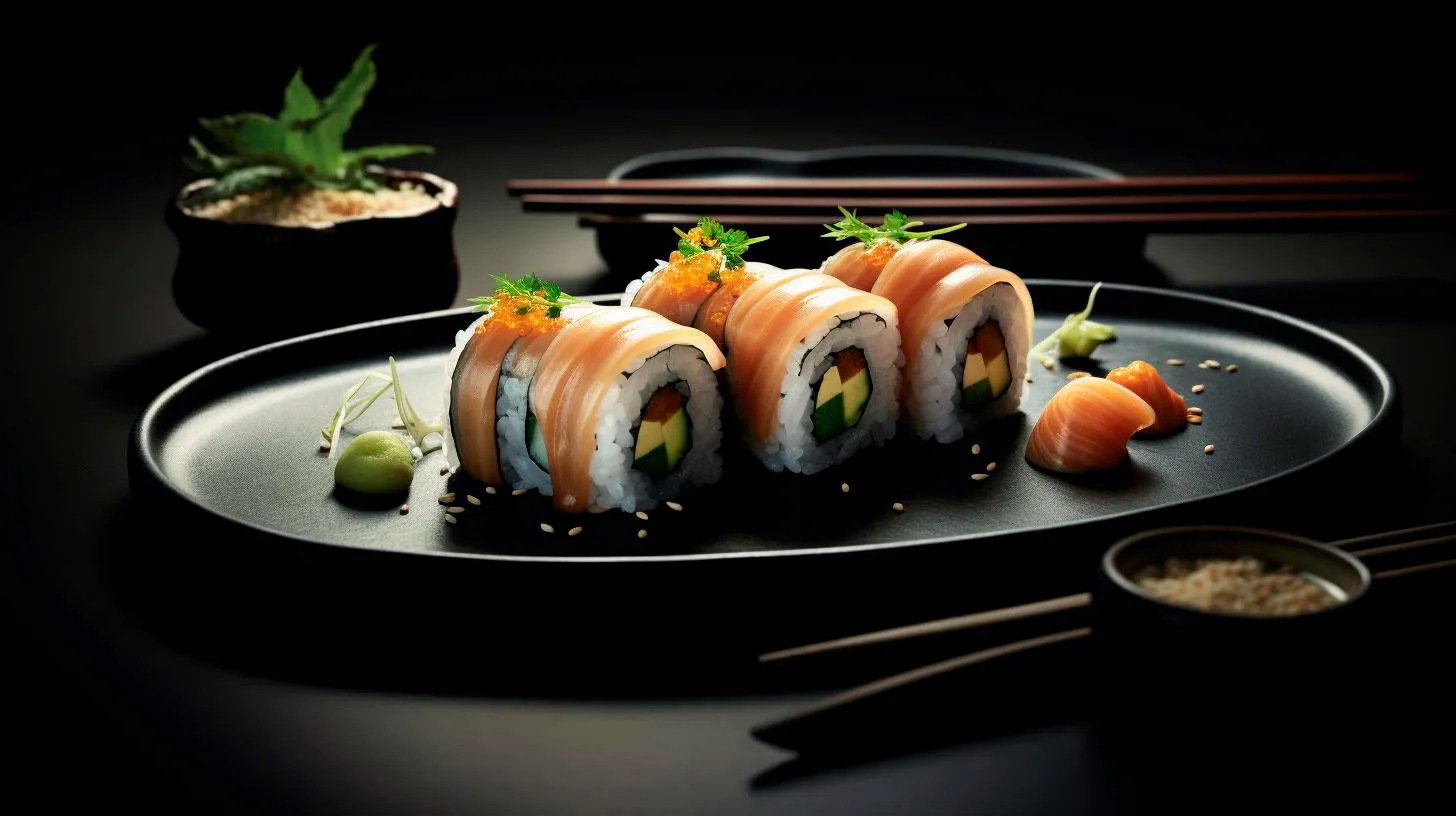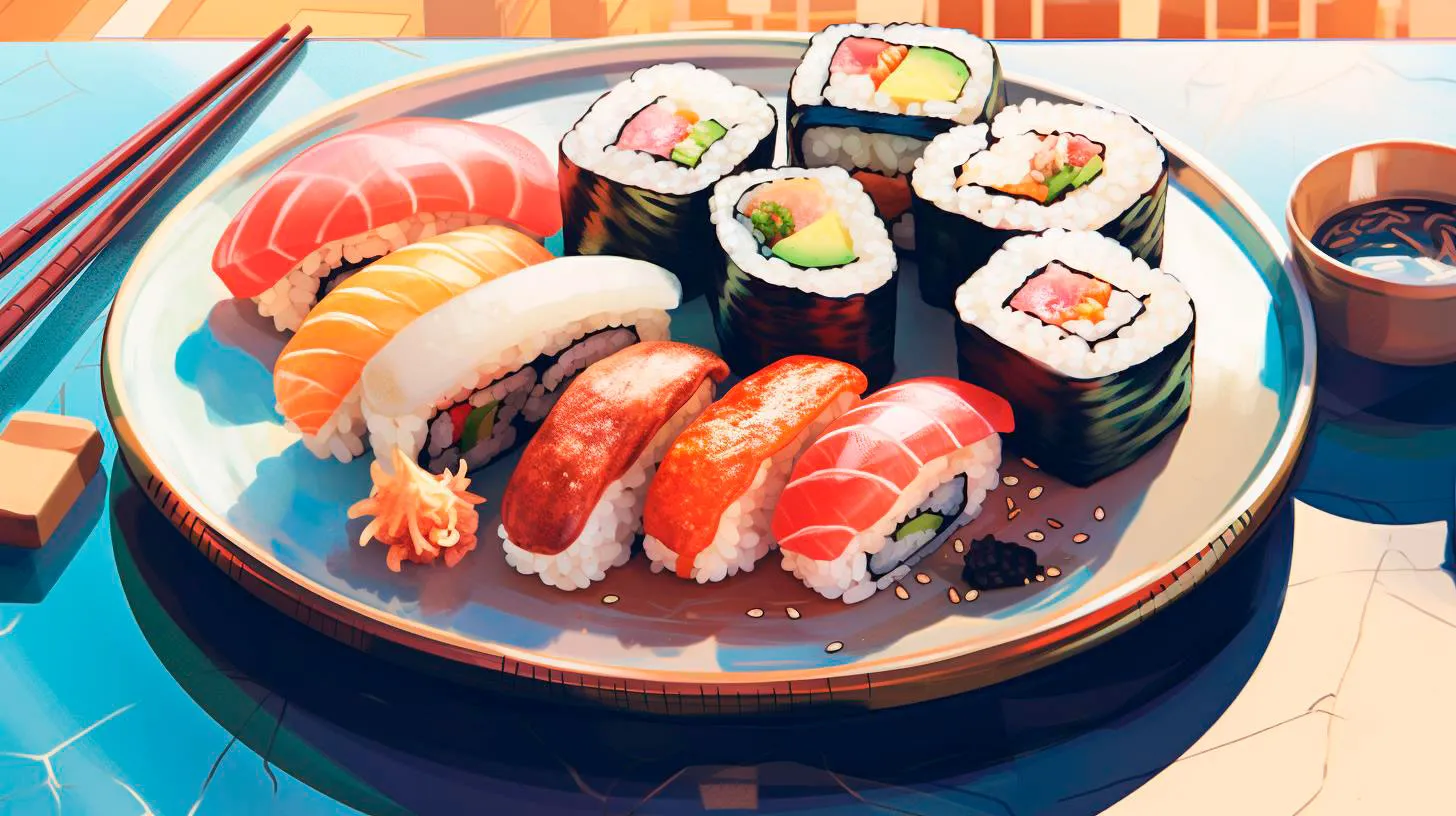The Secrets Behind an Authentic Sushi Apprenticeship
Behind the delectable creations that grace our plates, there lies a rigorous and time-honored tradition known as a sushi apprenticeship.
Embarking on a traditional sushi apprenticeship is a commitment that demands years of dedication, discipline, and passion. Sushi apprentices, known as “itamae,” undergo extensive training under the guidance of seasoned sushi masters. Let’s delve into the secrets behind this authentic sushi apprenticeship, uncovering the skills, challenges, and rewards that await those who aspire to master this ancient art form.
The Path to Sushi Mastery
While formal sushi apprenticeship programs can differ among establishments, they typically follow a similar pattern. Here are the key stages aspiring sushi chefs go through:
- Training as a sushi apprentice: A sushi apprenticeship can last anywhere from two to ten years, depending on the chef’s aptitude and the complexity of the skills they need to acquire. Apprentices start by learning the basics, such as knife skills, rice preparation, and fish handling.
- Observation and imitation: apprentices spend countless hours closely observing their mentors, imitating their actions to develop the precise techniques required to create exquisite sushi. This phase is focused on perfecting the fundamentals, from shaping nigiri to creating maki rolls.
- Gradual responsibility: As apprentices gain proficiency, they are gradually given more responsibilities, such as preparing ingredients, managing the sushi bar, and interacting with customers. It is during this stage that they begin to refine their own style and flavor profiles.
- Mastery and innovation: After years of intensive training and practice, a sushi apprentice becomes a master in their own right. While still respecting the traditional techniques, they develop their unique signature style and experiment with new flavors, ingredients, and presentations.
The Challenges and Rewards of an Apprenticeship
The journey towards becoming an itamae is not without its challenges. Here are some of the hurdles apprentices face along the way:
- Long working hours: Sushi apprentices often work long hours, sometimes exceeding 12 hours a day. This commitment is essential for mastering the intricate skills involved in sushi-making.
- Physical demands: The repetitive movements of sushi preparation can take a toll on the body. It requires exceptional hand-eye coordination, endurance, and attention to detail.
- Precision and consistency: Sushi chefs must achieve remarkable precision and consistency in every dish they create. Any deviation from perfection can alter the taste and texture of the sushi.
- Knowledge of ingredients: A deep understanding of various types of fish, seafood, vegetables, and flavor combinations is imperative for crafting well-balanced and exceptional sushi.
Despite the challenges, the rewards of completing a sushi apprenticeship are truly remarkable:
- Preservation of tradition: By undertaking an apprenticeship, sushi chefs contribute to preserving and passing on the authentic techniques and traditions of sushi-making to future generations.
- Artistic expression: Sushi chefs have the opportunity to express their creativity and artistic talents through their beautifully crafted dishes, elevating sushi-making to an art form.
- Career prospects: A fully-trained itamae enjoys excellent career prospects, both within reputable sushi establishments and even opening their own sushi restaurants.
- Cultural exchange: Becoming a sushi chef often involves immersing oneself in Japanese culture, learning about its customs, aesthetics, and philosophies.
Key Takeaways
Embarking on an authentic sushi apprenticeship is a transformative experience that requires unwavering dedication, patience, and a genuine passion for the art of sushi-making. Let’s summarize the key takeaways:
- A sushi apprenticeship can last from two to ten years, during which aspiring chefs learn the art of sushi-making from experienced mentors.
- An apprenticeship involves stages of observation, imitation, gradual responsibility, and finally, mastery.
- The challenges of a sushi apprenticeship include long working hours, physical demands, precision, and a deep knowledge of ingredients.
- Rewards include preserving tradition, artistic expression, promising career prospects, and cultural enrichment.
- Mastery of sushi not only requires technical skills but also an understanding of Japanese culture and aesthetic principles.
So, the next time you savor a piece of sushi, appreciate the hidden journey it took to reach your plate. Behind the simplicity and elegance lies the dedication and artistry of a sushi apprentice, ensuring an authentic and unforgettable dining experience.
Unraveling the Path of Dedication: A Journey to Mastering Sushi
In this blog post, we will embark on a journey to understand the intricacies of sushi-making and explore the road to mastering this revered culinary craft.
The Ancient Roots of Sushi
Sushi, as we know it today, has a rich history rooted in ancient Japan. It originated as a way to preserve fish in fermented rice, a technique discovered by Southeast Asian fishermen. Over the centuries, sushi has evolved into an art form known for its elegant simplicity and exquisite taste.
The art of sushi-making demands a deep understanding of the ingredients, techniques, and cultural significance. Let’s delve deeper into the key steps involved in achieving mastery in the world of sushi:
1. Understanding the Ingredients
Sushi is all about the precision and balance of flavors. To begin your journey towards mastering sushi, you must familiarize yourself with the essential ingredients:
- Shari (Sushi Rice): The foundation of sushi lies in perfectly seasoned sushi rice. This short-grain rice is cooked to perfection and then seasoned with a mixture of rice vinegar, sugar, and salt.
- Neta (Toppings): Toppings can vary, ranging from fresh sashimi-grade fish to a wide array of vegetables, cooked seafood, or even tofu. The quality and freshness of the neta are crucial in achieving an exceptional sushi experience.
- Nori (Seaweed): Nori is the thin sheet of roasted seaweed that wraps around the rice and toppings. It adds a unique umami flavor while holding the sushi roll together.
- Condiments: Soy sauce, wasabi, and pickled ginger are commonly served alongside sushi. These condiments enhance the flavors and provide a delightful balance to each bite.
2. Perfecting the Techniques
Mastery of sushi-making techniques requires practice, patience, and a commitment to innovation. Here are some techniques that aspiring sushi chefs must become proficient in:
- Making Sushi Rice: Achieving the ideal texture and flavor of sushi rice is an art in itself. Mastering the proper rinsing, cooking, and seasoning techniques is essential.
- Slicing Fish: The ability to slice fish properly is crucial to achieve attractive and consistent nigiri or sashimi. Each slice should be of uniform thickness to maintain the balance of flavors.
- Rolling Techniques: From the classic maki rolls to the intricate uramaki, mastering the rolling techniques is fundamental. The proper pressure, hand positioning, and attention to detail make all the difference.
- Garnishing: The visual appeal of sushi is equally important. Intricate garnishing techniques, such as thinly sliced vegetables, edible flowers, or sesame seeds, elevate the presentation to an artistic level.
3. Embracing the Spirit of Sushi
Mastering sushi is more than just a technical process; it’s a journey to embrace the essence of Japanese culture, precision, and dedication. Here are some key takeaways to keep in mind:
- Respect for Freshness: Sushi demands the use of the freshest ingredients available. A commitment to sourcing top-quality fish and produce can elevate your sushi-making skills to new heights.
- Attention to Detail: From the precise sizing of sushi rice to the placement of toppings, attention to detail is critical in achieving a harmonious balance and excellent presentation.
- Aesthetic Presentation: Sushi is a feast for the eyes before it tantalizes the taste buds. The art of presenting sushi with elegance and creativity is an integral part of mastering this culinary craft.
- Continuous Learning: Sushi-making is a lifelong journey of learning and improvement. Staying updated with new techniques, ingredients, and industry trends can help you refine your skills and creativity.
According to recent industry statistics, sushi consumption has witnessed a significant surge in popularity, with an annual growth rate of 7.2% globally. Now more than ever, the demand for skilled sushi chefs is booming, presenting a world of opportunities for aspiring culinary artisans.
Embarking on the path to mastering sushi is an undertaking that requires dedication, passion, and an unwavering commitment to excellence. Embrace the heritage, techniques, and spirit of sushi-making, and you’ll unlock a world of culinary delights, forever captivating the hearts and taste buds of those fortunate enough to experience its mastery.
From Novice to Maestro: The Trials and Triumphs of Sushi Apprenticeship
The Path Less Traveled
Sushi apprenticeship is a strenuous and demanding process that molds aspiring chefs into sushi maestros. Traditionally known as “Itamae,” these masters-to-be must undergo rigorous training under the watchful eye of a seasoned sushi chef. The journey begins with menial tasks such as cleaning and preparation, gradually progressing to more intricate techniques and skills.
Key Takeaways:
- Sushi apprenticeship is a traditional and structured training program.
- Itamae sushi apprentices start with basic tasks and gradually acquire more complex skills.
- Being an Itamae requires dedication, hard work, and commitment to excellence.
The Trials of the Slice
One of the initial challenges aspiring sushi apprentices face is mastering the art of slicing fish. Achieving the perfect cut, known as “Nigiri,” requires intricate knife skills and a deep understanding of the fish’s anatomy. Apprentices spend countless hours perfecting their knife techniques, practicing until muscle memory takes over.
Key Takeaways:
- Apprentices must master the art of slicing fish to perfection.
- Achieving the ideal cut, or Nigiri, demands impeccable knife skills and knowledge of fish anatomy.
- Practice is crucial to develop muscle memory and achieve precision in slicing techniques.
The Art of Rice
While fish slicing is undeniably important, sushi apprenticeship also emphasizes the mastery of sushi rice. Preparing the perfect sushi rice, known as “Shari,” is a skill that requires both technical precision and a discerning palate. From selecting the right rice grains to understanding the ideal water-to-rice ratio, apprentices are continually tested to achieve consistent, flavorsome rice.
Key Takeaways:
- Apprentices learn to prepare sushi rice, known as Shari, with technical precision.
- The selection of the right rice grains and water-to-rice ratio is crucial for achieving consistently delicious rice.
- Creating perfect sushi rice involves a delicate balance between texture, flavor, and temperature.
The Artistry of Presentation
Beyond technical skills, sushi apprenticeship hones the artistry of sushi presentation. Apprentices are taught to create visually stunning sushi arrangements that entice the senses. This involves a keen eye for aesthetics, an understanding of color theory, and the ability to harmonize various sushi ingredients to create a visually appealing masterpiece.
Key Takeaways:
- Apprentices develop the artistry of sushi presentation, creating visually appealing arrangements.
- Understanding color theory and harmonizing ingredients is essential for captivating sushi presentation.
- Elegant presentation enhances the overall culinary experience and entices diners.
The Rewards of Mastery
Enduring the challenges and trials of a sushi apprenticeship brings forth an array of rewards for those who persevere. Sushi apprenticeship lays the foundation for a lifelong journey of artistic expression, culinary excellence, and personal growth. Becoming an Itamae brings a sense of achievement and the opportunity to delight diners with their finely honed skills.
Key Takeaways:
- Sushi apprenticeship offers a pathway to artistic expression, culinary excellence, and personal growth.
- Becoming an Itamae is a remarkable achievement that brings a sense of pride.
- A sushi master has the privilege to create memorable dining experiences for customers.
Closing Thoughts
Sushi apprenticeship is a transformative journey that requires dedication, perseverance, and an unwavering commitment to growth. From mastering the art of fish slicing to perfecting the artistry of presentation, the trials and triumphs faced during the apprenticeship period shape aspiring chefs into skilled sushi masters. The path from novice to maestro may be challenging, but the rewards at the end are immeasurable.
Discovering the Delicate Craftsmanship of Sushi: A Story of Commitment
The meticulous preparation, the attention to detail, and the pursuit of perfection make sushi an experience like no other.
The Art of Sushi
At first glance, sushi might seem like a simple combination of fish, rice, and seaweed. However, the true essence of sushi lies in its preparation and presentation. Every step in creating a piece of sushi requires an incredible level of skill and dedication.
The fish used in sushi needs to be incredibly fresh to maintain its quality and taste. Sushi chefs carefully inspect and select the freshest fish available to ensure that every bite is a sublime experience. This commitment to freshness and quality is what sets sushi apart from other cuisines.
But the artistry of sushi doesn’t stop at the fish. The rice, an essential element of sushi, is equally important. The rice is cooked to perfection, seasoned with vinegar, sugar, and salt to achieve the ideal balance of flavors. Each grain is meticulously handled to ensure the desired texture and consistency. The symbiotic relationship between the fish and rice is what defines the harmony of sushi.
Furthermore, the presentation of sushi is an art form in itself. Chefs carefully arrange the ingredients to create visually stunning pieces that are as pleasing to the eye as they are to the palate. The presentation highlights the chef’s creativity and attention to detail, turning each plate of sushi into a work of art.
The Commitment to Perfection
Behind every extraordinary sushi experience lies a commitment to perfection. Sushi chefs undergo years of rigorous training to master their craft. They dedicate countless hours to perfecting their knife skills, learning about different fish species, and understanding the delicate balance of flavors.
Moreover, sushi chefs adhere to strict standards of cleanliness and hygiene. Maintaining a pristine workspace is crucial to prevent any potential contamination and to ensure the utmost quality of the final product. This dedication to cleanliness is another testament to the commitment of sushi chefs to deliver the finest sushi experience.
Key Takeaways from the World of Sushi
- Commitment to Quality: Sushi chefs exemplify the importance of using only the freshest ingredients and maintaining the highest standards of quality.
- Attention to Detail: Sushi-making requires meticulous precision, from the selection of fish to the presentation of each piece.
- Artistry and Creativity: Sushi chefs showcase their creativity through the visual appeal of their dishes, turning sushi into a culinary masterpiece.
- Persistence and Perseverance: The extensive training and pursuit of perfection by sushi chefs teach us the value of persistence and dedication in our own endeavors.
Sushi is more than just a meal; it represents the fusion of culinary skill, artistic expression, and unwavering commitment. It serves as a reminder to embrace the journey of mastery, constantly striving for excellence in our own pursuits. So, the next time you delve into the world of sushi, savor the flavors and admire the craftsmanship that elevates it to a true gastronomic masterpiece.



